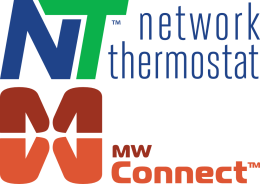
The simple answer is YES. IAQ directly impacts the health and well-being of students and teachers, as well as their ability to learn and perform at their best. Poor IAQ can lead to health problems such as headaches, fatigue, allergies, asthma, and respiratory infections, which can result in increased absenteeism and reduced academic performance. Both of which are detrimental to the student, staff, and financial resources of the school.
CO2 in the Classroom
One of the most significant factors affecting IAQ in classrooms is the level of carbon dioxide (CO2) present in the air. Elevated CO2 levels can have adverse effects on cognition, including impaired decision-making, reduced attention span, and decreased ability to perform complex tasks. This is because CO2 can build up in poorly ventilated spaces, and when breathed in, it can displace oxygen in the bloodstream, leading to decreased oxygen supply to the brain. Studies have shown that maintaining CO2 levels below 1000 parts per million (ppm) can help to prevent these negative effects.
In addition to the cognitive effects, poor IAQ can also contribute to the spread of viruses and other airborne illnesses in the classroom. This is particularly relevant in the context of the COVID-19 pandemic, where airborne transmission has been identified as a significant mode of spread.
Measuring and Monitoring CO2 Levels
But how can I accurately measure and monitor CO2 levels in the classrooms? How can we correct the situation if the IAQ is not conducive? Network Thermostat can help! We introduced our X7C model last year in response to that question from school districts. Integrating the highest quality CO2 module available, with our Best-in-Class thermostat ecosystem, CO2 levels can be precisely measured, alert levels set, and actions taken when the carbon dioxide levels are exceeded. Alerts can be set for CO2 threshold levels and can be sent via email and/or text message for immediate notification. If desired, the thermostat can send a signal to a fresh air damper actuator to introduce fresh air which will help reduce the amount of CO2 in the space.
Other Mitigations Steps
Are there other mitigation steps that can be taken to improve IAQ in classrooms? The use of UV-C (ultraviolet-C) air purifiers is a very effective mitigation method. UV-C is a type of ultraviolet light that can kill airborne viruses and bacteria, and UV-C air purifiers can be installed in HVAC systems to help disinfect the air, eliminate mold, and as a bonus, keep the HVAC coil clean. The one drawback to UV-C mitigation is the expense. The bulbs are expensive and have a fixed life span between 9,000 and 12,000 hours, which means they must be replaced over time. Our NetX patent pending solution when incorporated in a typical school calendar, will extend the life of that expensive bulb four times the normal life. Connect the UV-C lamp to the thermostat and configure one relay to handle IAQ is all that’s needed. The cost of providing clean, healthy air will be recovered quickly by reduced absenteeism.
Conclusion
Good indoor air quality is essential in the K-12 classroom setting, as it can impact the health and well-being of students and teachers, as well as their ability to learn and perform at their best. Elevated CO2 levels can have adverse effects on cognition, and poor IAQ can contribute to the spread of viruses and other airborne illnesses. Mitigation steps such as UV-C air purifiers and fresh air dampers can improve IAQ and create a healthier and safer learning environment.
Want to know more? We are happy to discuss how Network Thermostat can provide you with better control of your Indoor Air Quality and save you money on your energy spend.



